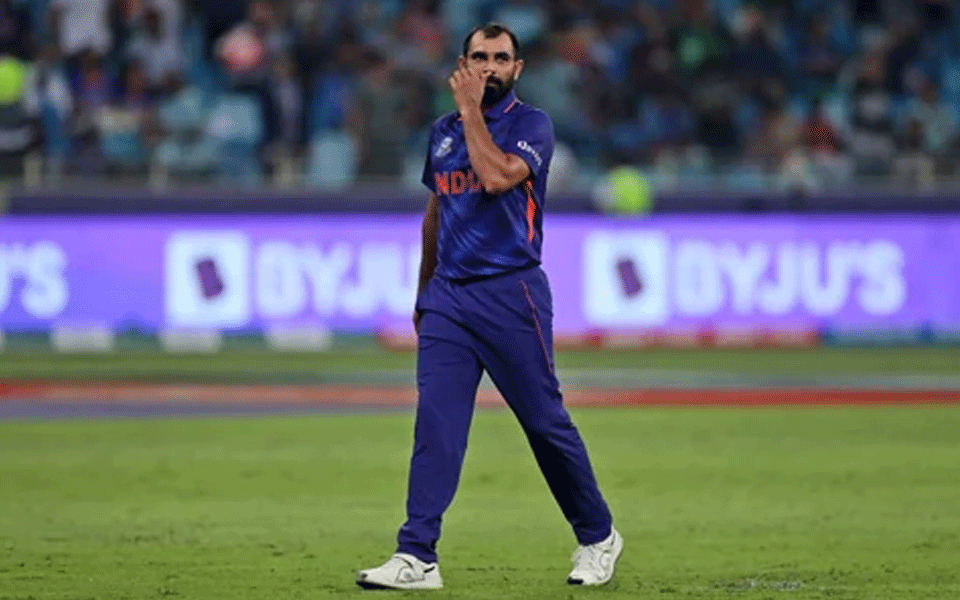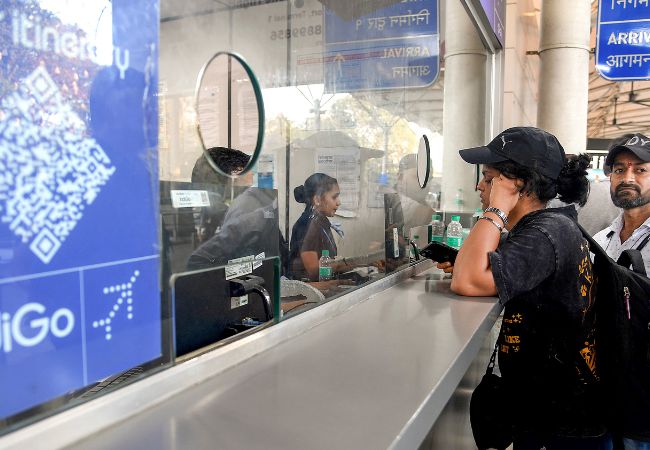New Delhi, July 27: The US visa of Indian pacer Mohammed Shami, who is part of the India squad for the upcoming West Indies tour, got rejected initially because of his existing police record and charges of domestic violence. However, the Board of Control for Cricket in India (BCCI) intervened to get the issue sorted and the visa was given to the fast bowler.
Speaking to , a senior BCCI functionary said that Shami''s visa had been rejected due to the police records after the family problems that the player had gone through, but the board wrote to the embassy and the matter was cleared.
"There was some issue with the police verification part as he was involved in a problem with his wife. But the BCCI then wrote to the embassy and the matter was sorted," the functionary said.
Last year, Shami and his estranged wife Hasin Jahan separated after the latter accused her husband for adultery and domestic violence. Jahan filed an FIR against Shami in Kolkata. Their divorce case is currently sub-judice.
Shami had himself spoken about that phase of his life when the turmoil in his personal life also saw his fitness go for a toss and he was dropped from the Test team after failing a fitness test.
"I had some family problems at that point of time. The fitness test didn't go well and I accept that I failed. But then, I wasn't even in that frame of mind where I could focus on the match against Afghanistan. I wasn't mentally prepared and had to undergo the Yo-Yo Test at that point in time and I flunked," he had told .
Asked if that bothered him as people suddenly started talking about how it could be the start of the end of his international journey, Shami said: "Pressure was there, but I kept myself motivated and told myself that I have to work on my fitness and come back strongly."
India will be playing three T20Is, three ODIs and two Test matches on their tour to the Caribbean Islands which begins from August 3. The first two T20I matches will be played in Florida.
Shami picked up 14 wickets in just four matches he played at the World Cup 2019 where India lost to New Zealand in the semifinals.
Let the Truth be known. If you read VB and like VB, please be a VB Supporter and Help us deliver the Truth to one and all.
Colombo (PTI): A mobile hospital set up by India in Sri Lanka has provided medical care to over 2,200 people affected by Cyclone Ditwah, as New Delhi ramped up its assistance to the flood-ravaged island nation with engineering support and delivery of fresh relief consignments, the Indian mission here said on Sunday.
Sri Lanka has been grappling with widespread flooding, landslides and severe infrastructure collapse triggered by the cyclone, leaving several districts isolated and severely straining the country's disaster-response capacity.
At least 627 people have been killed and 190 remain missing as of Sunday noon due to catastrophic floods and landslides caused by extreme weather conditions since November 16.
Sharing a social media post by the Ministry of External Affairs on its X handle, the Indian High Commission said a field hospital set up by India in Mahiyanganaya near Kandy has provided medical care to more than 2,200 people affected by the cyclone since December 5.
The hospital has also performed 67 minor procedures and three surgeries, it said. The field hospital was airlifted to Sri Lanka by an IAF C-17 aircraft along with a 78-member Indian medical team on Tuesday.
In another post, the mission said Indian Army engineers, working with Sri Lanka Army Engineers and the Road Development Authority, in Kilinochchi have begun removing a damaged bridge on the Paranthan–Karachchi–Mullaitivu (A35) road, a key route disrupted by the cyclone.
"This joint effort marks another step toward restoring vital connectivity for affected communities," it said.
India has additionally sent nearly 1,000 tonnes of food items and clothing contributed by the people of Tamil Nadu. Of these, about 300 tonnes reached Colombo on Sunday morning aboard three Indian Naval ships.
High Commissioner Santosh Jha handed over the supplies to Sri Lankan Minister for Trade, Commerce, Food Security and Cooperative Development Wasantha Samarasinghe.
India, on November 28, launched 'Operation Sagar Bandhu', a Humanitarian Assistance and Disaster Relief (HADR) initiative, to aid Sri Lanka in its recovery from the devastation caused by Cyclone Ditwah.
Since the launch of the operation, India has provided about 58 tonnes of relief material, including dry rations, tents, tarpaulins, hygiene kits, essential cloths, water purification kits and about 4.5 tonnes of medicines and surgical equipment, the Indian mission said in a press release on Sunday.
Another 60 tonnes of equipment, including generators, inflatable rescue boats, Outboard Motors, and excavators, have also been brought to Sri Lanka, it said, adding that 185 tonnes of Bailey Bridge units were airlifted to restore critical connectivity along with 44 engineers.
Two columns of the National Disaster Response Force, comprising 80 experts and K9 units with specially trained dogs, assisted with immediate rescue and relief efforts in Sri Lanka.
Besides the field hospital in Mahiyanganaya, medical centres have also been set up in the badly hit Ja-Ela region and in Negombo. INS Vikrant, INS Udaygiri, and INS Sukanya provided immediate rescue and relief assistance to Sri Lanka.
Apart from the two Chetak helicopters deployed from INS Vikrant, two heavy-lift, MI-17 helicopters of the Indian Air Force are actively involved in evacuations and airlifting relief material, the release said.
At the request of the Sri Lankan Disaster Management Centre, a virtual meeting was organised between DMC and the Indian Space Research Organisation (ISRO)'s National Remote Sensing Centre on Saturday.
Since the onset of the disaster, ISRO has been providing maps to assist DMC in its rescue efforts, the release said.





